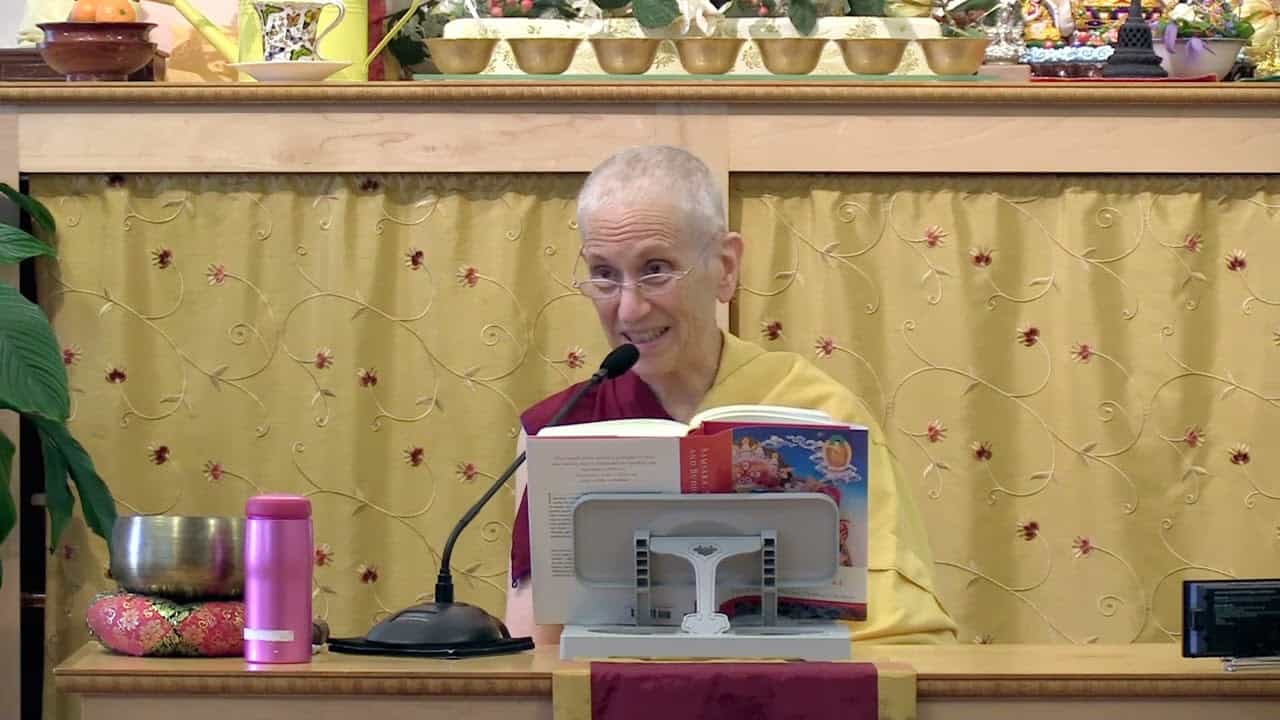Our human value
16 Samsara, Nirvana, and Buddha Nature
Part of an ongoing series of teachings (retreat and Friday) based on the book Samsara, Nirvana, and Buddha Nature, the third volume in The Library of Wisdom and Compassion series by His Holiness the Dalai Lama and Venerable Thubten Chodron.
- Review of Asanga’s true duhkha by way of ten points
- Applying the Dharma to daily life
- Reflecting on duhkha leads to aspiring for liberation
- Virtuous aspiration versus clinging attachment
- Ascetism versus relinquishing attachment
- Dealing with obstacles to Dharma practice
- Approaching the afflictions with the correct attitude
- The afflictions are empty of inherent existence
Samsara, Nirvana, and Buddha Nature 16: Our human value (download)
Contemplation points
- How do we go about making the Dharma come alive for us?
- What are some old habitual ways that you have used to deal with negative feelings? How have these brought more suffering into your life?
- Explain in your own words: What is the value of our human life according to the Buddha’s teachings?
- What does it mean to relinquish attachment to our bodies, relationships, food, etc? What does it NOT mean?
- What are some of the ways to think about difficult experiences to increase our happiness now and in the future?
- What is the purpose of studying the origins of duhkha?
- Consider that an affliction is just a label on top of similar moments of mind. Does this help to change how you think about anger, attachment, jealousy, etc?
- Imagine what it would be like not to get angry, so that no matter what others said or did, you didn’t get upset? Now consider that nirvana is the absence of all these afflictive mental states. How peaceful would that be?
Venerable Thubten Chodron
Venerable Chodron emphasizes the practical application of Buddha’s teachings in our daily lives and is especially skilled at explaining them in ways easily understood and practiced by Westerners. She is well known for her warm, humorous, and lucid teachings. She was ordained as a Buddhist nun in 1977 by Kyabje Ling Rinpoche in Dharamsala, India, and in 1986 she received bhikshuni (full) ordination in Taiwan. Read her full bio.


